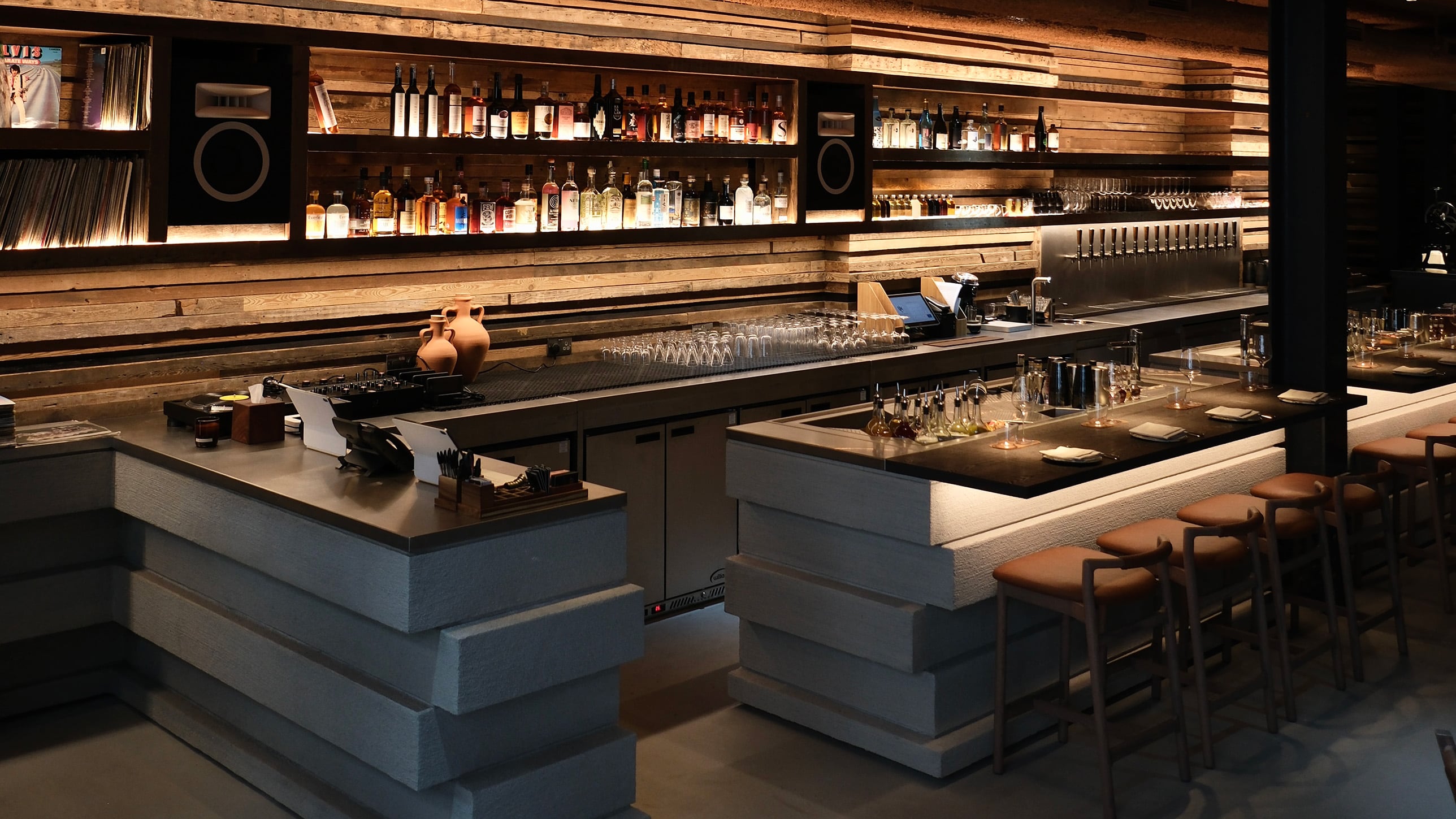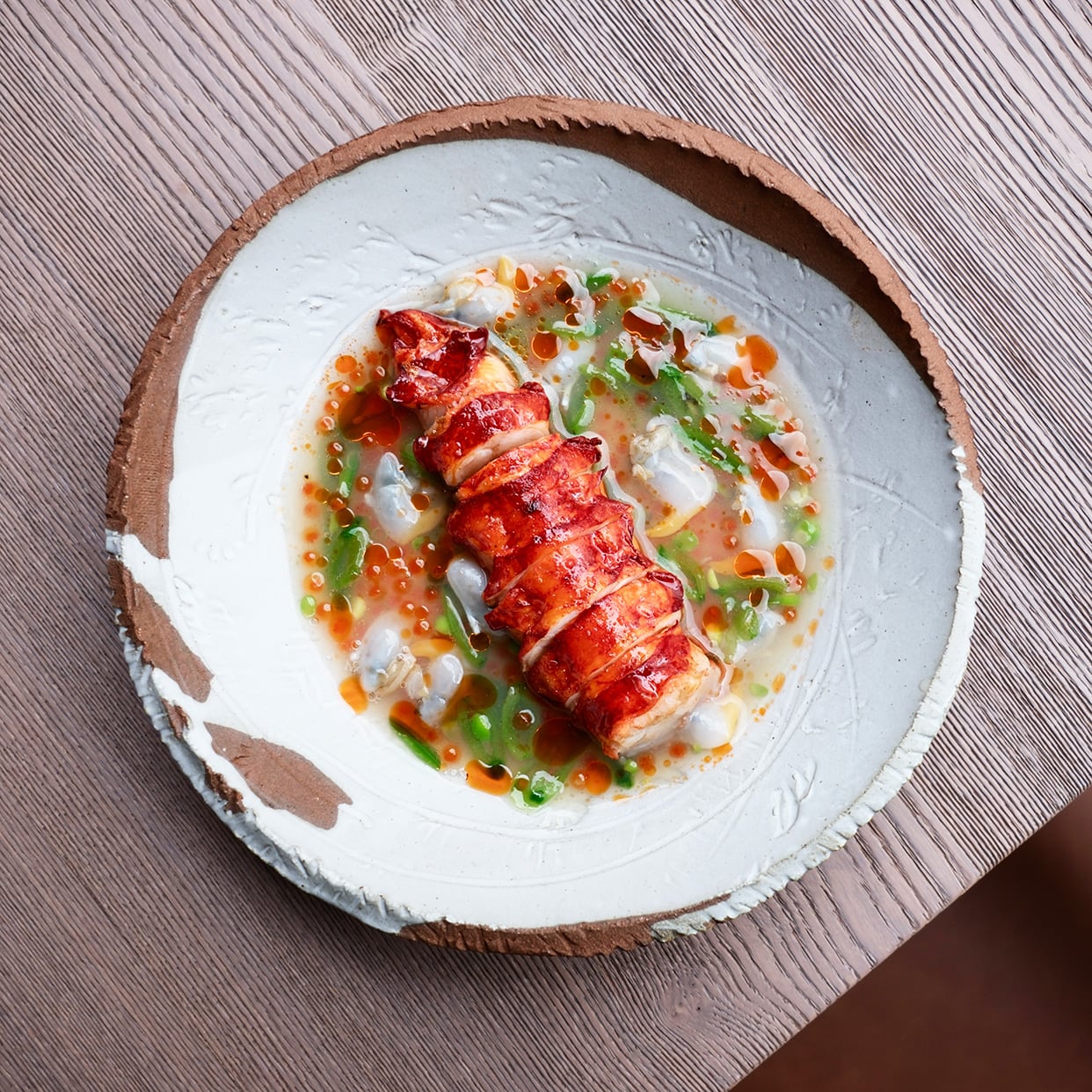It turns out I wasn’t the only one to assume that MAD Restaurants is so called because it is making its debut with not one but two ambitious central London restaurants. The group’s founder Artem Login jokes that the MAD moniker has ended up being apt, but says it was largely chosen to signal that the group is out to challenge the norms of the capital’s dining scene.
“It is a crazy thing to do but MAD Restaurants isn’t about creating a series of restaurants in the shortest time possible. It’s about executing a series of unique restaurants.”
Opened late last month on Soho’s Wardour Street in the 10,000 sq ft site that was previously home to a Vapiano, MOI is being billed as a Japanese-inspired restaurant and features a large dining room and open kitchen on the ground floor and a sushi counter and listening room with a high-spec sound system within the basement. ALTA, meanwhile, is a northern Spain-inspired restaurant headed by former Gazelle chef Rob Roy Cameron that is set to launch on the other side of Soho within the Kingly Court development early next month.
Friendly and surprisingly relaxed for a man launching two huge restaurants within about a month of each other, the 34-year-old is part of the family behind successful all-day dining restaurant chain L’ETO. Founded on Soho’s Wardour Street in 2011, the brand now operates a total of 40 sites: five in London and a further 35 in the Middle East. MAD is being funded exclusively by L’ETO’s apparently considerable profits.

A Soho doubleheader
As anyone who has ever launched a restaurant will likely have guessed, opening two venues concurrently was not the plan. Shortly after signing the lease for MOI, Login was approached by landlord Shaftesbury Capital about the former The Rum Kitchen site on the upper level of Kingly Court. Inevitably, MOI has ended up being a bit slower than anticipated and ALTA a bit faster.
Login’s decision to launch a duo of restaurants in Soho is partly opportunistic – large sites in Soho do not come up often – but is mainly down to the area’s rapidly changing demographic make-up.
“Soho and particularly Wardour Street is our home,” he says. “We have seen the area change a great deal over the years. Soho is moving in a good direction. It was a little rough and ready when we launched L’ETO here about 15 years ago. We have also noticed that some previously Mayfair-based offices are coming here to take advantage of lower rents.”
He is also taking advantage of lower rents to some extent. Soho is cheaper than Mayfair and prime areas of Covent Garden and Marylebone too, all of which would have been more obvious locations for vibey, high-spec restaurants like MOI and ALTA. Login is taking a bit of a gamble, then. But he knows the area well, and there arguably is a gap in the market for precisely the sort of venues he is creating.
“Wardour Street offers incredible levels of footfall. The other thing we like about Soho is that you get a cool, adventurous foodie crowd but you also have the potential to pull in more affluent diners from the neighbouring central London areas,” he adds.

Just don’t call it an izakaya
MAD’s USP is that it offers a British take on international cuisines. “The distinction between a Japanese restaurant and a Japanese-inspired restaurant is an important one,” Login explains. “There are lots of Japanese restaurants in London, but only a handful that take the essence of Japanese cuisine and combine it with homegrown British chefs and produce,” says Login, who has assembled a crack team of restaurant professionals to oversee his new restaurants that includes group operations manager Giulia Cappuccio (The Ledbury, KOL); group executive chef Andy Cook (Gordon Ramsay Restaurants); and group head of beverage Dino Koletsas (Artesian Bar at The Langham).
MOI’s head chef is Nick Tannett, who like Cook has spent time in Japan, while the sushi side of things will be overseen by ex-Endo Kazutoshi chef Kabilash Tuladhar. The restaurant brings together a number of key trends in one package: a produce-led approach to cooking; natural wine; and high-quality sound.
“It’s probably more East London in feel than West London, but we like that,” says Login, who is keen that his new restaurant isn’t described as an izakaya, an oft-misused term that, in Japan at least, denotes a basic drinks-led venue in which food is rarely the main attraction.
That said, the food offering is fairly tight for such a large venue. Menu sections include snacks, raw, binchotan (essentially skewers), oak (larger dishes cooked over wood), and birch (dishes cooked in a wood-burning oven). Smaller plates include silken tofu, toasted buckwheat and Ebisu soy; tempura lobster with curry and Flourish Farm leaves; and skewers of beef tongue, shishito pepper and marigold miso. Larger plates include Tamworth pork chop with fermented pepper, peach and karashi mustard.

Aiming high
ALTA – which takes its name from the Spanish word for ‘high’ – is a different proposition to MOI because it is overseen by a chef that has already made a name for himself on London’s restaurant scene.
Roy Cameron is a big deal, having held senior roles at a number of avant-garde Spanish restaurants including Albert Adrià’s 41 Degrees restaurant in Barcelona, which was generally considered the spiritual successor to legendary Roses restaurant El Bulli.
On these shores he is probably best known for Gazelle, an excellent but short-lived project that was likely a bit too edgy for its Mayfair locale (the lift that deposited guests right into the middle of the first-floor dining room probably didn’t help either).
Its chef may have a background in tasting menu-only restaurants serving complex, highly technical cuisine, but the food at ALTA will be relatively straightforward, with all dishes designed for sharing. ALTA takes its name from Alta Navarra peninsula, which spans from Pamplona to Donostia and incorporates the Basque region “Rob is a great chef. He can do simplicity but he can also do elegance. We believe Spanish cuisine is a little underrepresented in London at the moment so we’re very excited about this one,” Login says.
So, are there any advantages to launching two restaurants at once? “It’s good for the team because they can see what we’re about and that we aren’t out to create cookie-cutter concepts. There’s an energy to what we are doing,” says Login, who is rumoured to be eyeing up a third West End restaurant.
I’ll throw in another benefit: opening two restaurants at once has certainly got MAD Restaurants on people’s radars.


